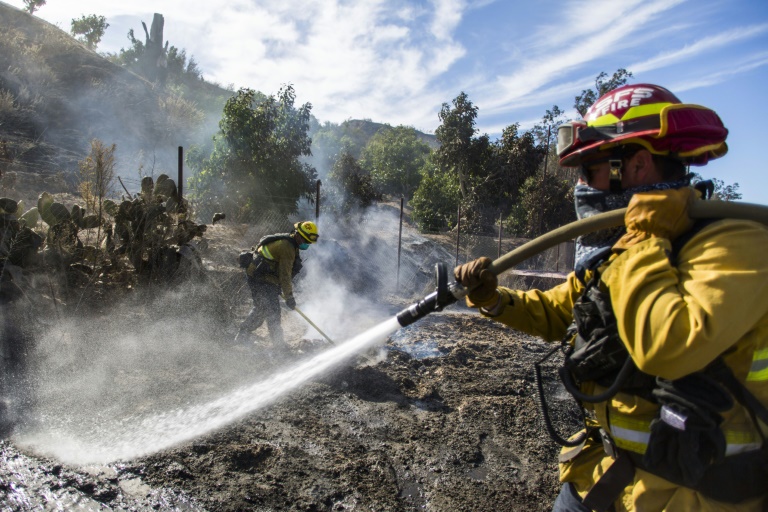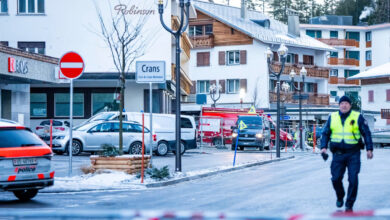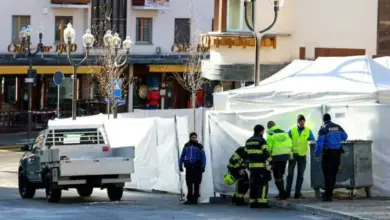
Firefighters in California made progress Saturday containing a sizable new blaze in the southern part of the state as they continued to battle a much larger fire in the north.
The so-called Maria Fire broke out Thursday in bone-dry conditions in Ventura County, 65 miles (105 kilometers) northwest of Los Angeles, sending thousands of people fleeing and endangering more than 2,500 structures.
It had spread to 9,412 acres (3,808 hectares) by Saturday evening, California fire officials said, but was 30 percent contained.a
That progress came despite the forced grounding overnight of firefighting helicopters after at least two hobby drones were seen operating in the area, posing a risk of collision, officials said.
The Ventura County Fire Department warned on Twitter that “even a tiny drone can cause a serious or fatal accident if it collides with firefighting aircraft.”
In Sonoma County north of San Francisco, the Kincade Fire — the largest in the state this season — was continuing to burn over 77,758 acres on Saturday evening and was 74 percent contained, state officials said.
The fires prompted Governor Gavin Newsom to declare an emergency across the state, parts of which have not had rainfall for months.
An extreme red-flag warning issued for the Los Angeles area this week was lifted Thursday but the National Weather Service warned that so-called Santa Ana winds could still wreak havoc through Saturday evening.
The state’s largest utility company, Pacific Gas & Electric, has been shutting off power to millions of customers in northern and central California, reducing fire risks but provoking public outrage.
Last year’s Camp Fire destroyed the northern California town of Paradise and killed 86 people. Similar blazes in the area the previous year killed 44 people.
Remarkably, the past two weeks have brought no fatalities even as hurricane-force winds have fanned fierce blazes, the San Francisco Chronicle reported.
Authorities credited repeated warnings on radio and TV, PG&E’s precautionary power shut-offs, the pre-positioning of firefighters in high-risk forests, and more sophisticated weather-prediction capabilities than in past years.



